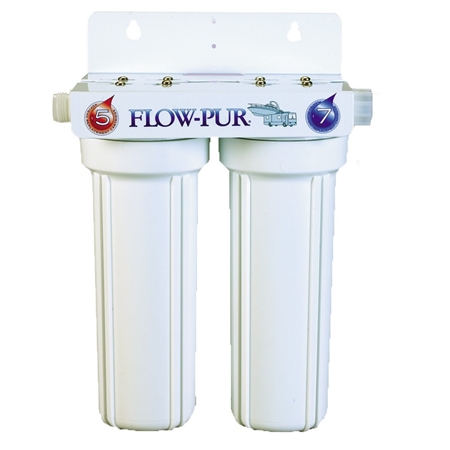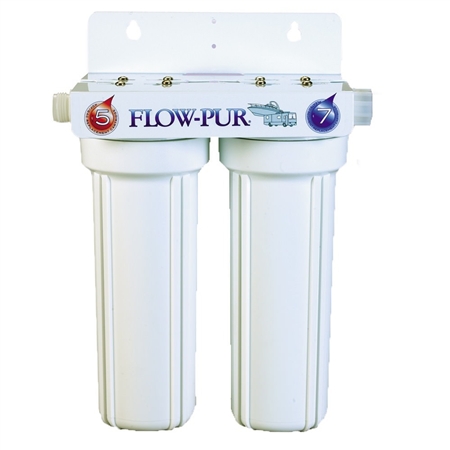The Flow-Pur POE12DSA1KDF filters about 5 microns. The e-coli is about 2 microns so these filter would not be able to filter out something that small.
With some research, I found some great information on removing e-coli. Below is what I gathered.
UV disinfection is the preferred method - no chemicals, cost effective, easy to maintain, does not change taste or smell, and is extremely effective. The UV dose needed to kill 99.99% of e.coli is approximately 6 mJ/cm2. Most residential UV units provide a UV dose of 30-40 mJ/cm2 - more than enough to kill e.coli and any other harmful pathogens.
Chlorine and Chloramine - this method can be very effective, but is difficult for individual owners to operate properly without under or over-dosing. Chlorine also changes the taste and smell of the water and there is a risk of formation of disinfection byproducts such as trihalomethanes and HAA. Due to a number of associated health risks, it is vitally important to regulate what chemicals we handle and put into our bodies, and this makes using chlorine treatment a less appealing option.
Membrane technologies such as reverse osmosis, nano-filtration, and ultrafiltration can work but it can be very difficult to monitor ongoing performance and effectiveness and there is a well-documented risk of bacteria growing through the membranes. Hence, we do not recommend this approach.
Cartridge filters, carbon filters, pitcher style filters (Eg. Brita) do not remove e.coli. e.coli are too small and simply pass through these filters. Filters containing activated carbon are actually a great place for bacteria to grow and multiply.





Add New Comment